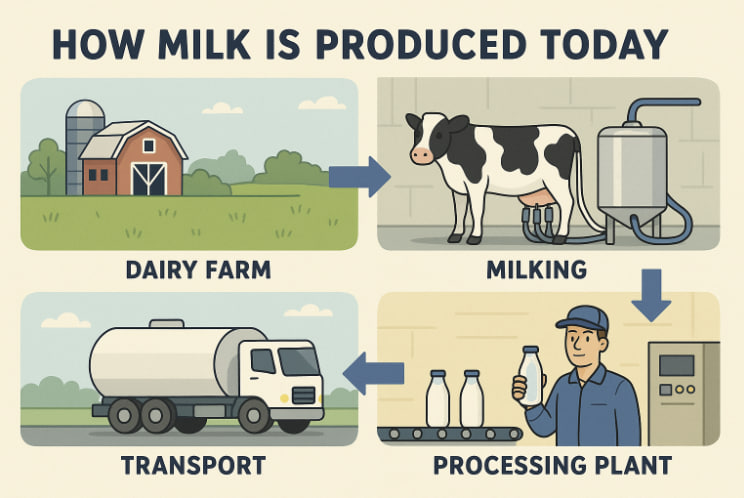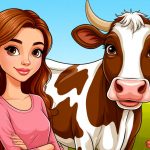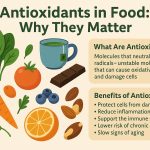Milk is one of the most commonly consumed animal products in the world. While the process of obtaining milk may seem simple, modern dairy production is a complex system involving animal care, mechanized milking, quality control, and logistics. Understanding how milk reaches your table helps you make informed choices about sustainability, nutrition, and ethics.
1. The Dairy Farm: Where It Begins
Modern milk production typically takes place on dairy farms, which may vary in size from small family operations to large-scale industrial facilities.
Key steps:
- Cows are bred and selected for high milk yield (usually Holstein-Friesians).
- Each cow produces 20–40 liters of milk per day during lactation.
- Cows are milk-producing for about 10 months after giving birth.
- Animal welfare (nutrition, housing, health) is critical for productivity and legal compliance.
Some farms are certified organic, avoiding synthetic hormones and antibiotics and ensuring access to pasture.
2. Milking Process: From Cow to Tank
Most modern dairies use automated milking systems to improve efficiency and hygiene.
- Cows are milked 2–3 times per day, either in milking parlors or via robotic milking stations.
- Teats are cleaned before and after milking to prevent infection (like mastitis).
- The milk flows through sterile tubes into refrigerated bulk tanks at ~4°C (39°F).
Modern technology allows real-time monitoring of each cow’s milk output, temperature, and health indicators.
3. Transportation and Storage
- Milk is transported daily or every other day in insulated tankers to local dairy processing plants.
- Tankers are sanitized between trips to prevent bacterial growth.
- Upon arrival, the milk is tested for quality (fat content, antibiotic residues, contamination).
Only milk that meets safety standards moves to processing. Contaminated batches are discarded or diverted.
4. Processing and Packaging
At the dairy plant, raw milk undergoes:
a) Pasteurization
- Heated to 72°C (161°F) for 15–20 seconds
- Destroys harmful bacteria while preserving nutrients
b) Homogenization
- Breaks down fat globules so cream doesn’t separate
- Creates a uniform texture
c) Separation and Standardization
- Milk may be separated into skimmed milk, cream, low-fat, or fortified products (like vitamin D milk)
d) Packaging
- Bottled in cartons or plastic containers under sterile conditions
- Labeled with expiration dates and nutritional facts
5. Distribution to Stores
- Refrigerated trucks deliver milk to supermarkets and shops.
- Most fresh milk is consumed within 1–2 weeks of production.
- Ultra-high temperature (UHT) milk can last several months unrefrigerated, used more in Europe and Asia.
Alternative Milk Sources
- Milk is also produced from goats, sheep, and buffalo, especially in specific regions.
- Plant-based milks (e.g., oat, soy, almond) are not produced the same way and involve different processing.
Environmental and Ethical Considerations
- Large-scale dairy farming raises concerns about greenhouse gas emissions, water use, and animal welfare.
- Innovations include rotational grazing, methane-reducing feed, and robotic milking that reduces stress.
- Consumers increasingly seek organic, grass-fed, or local milk for sustainability and health reasons.
Glossary
- Pasteurization — Heating milk to kill pathogens and extend shelf life.
- Homogenization — Mechanically breaking fat into small droplets to prevent separation.
- Mastitis — A painful infection of the udder in dairy cows.
- UHT milk — Milk processed at very high temperatures for longer shelf life.
- Lactation — The period when a female mammal produces milk after giving birth.


